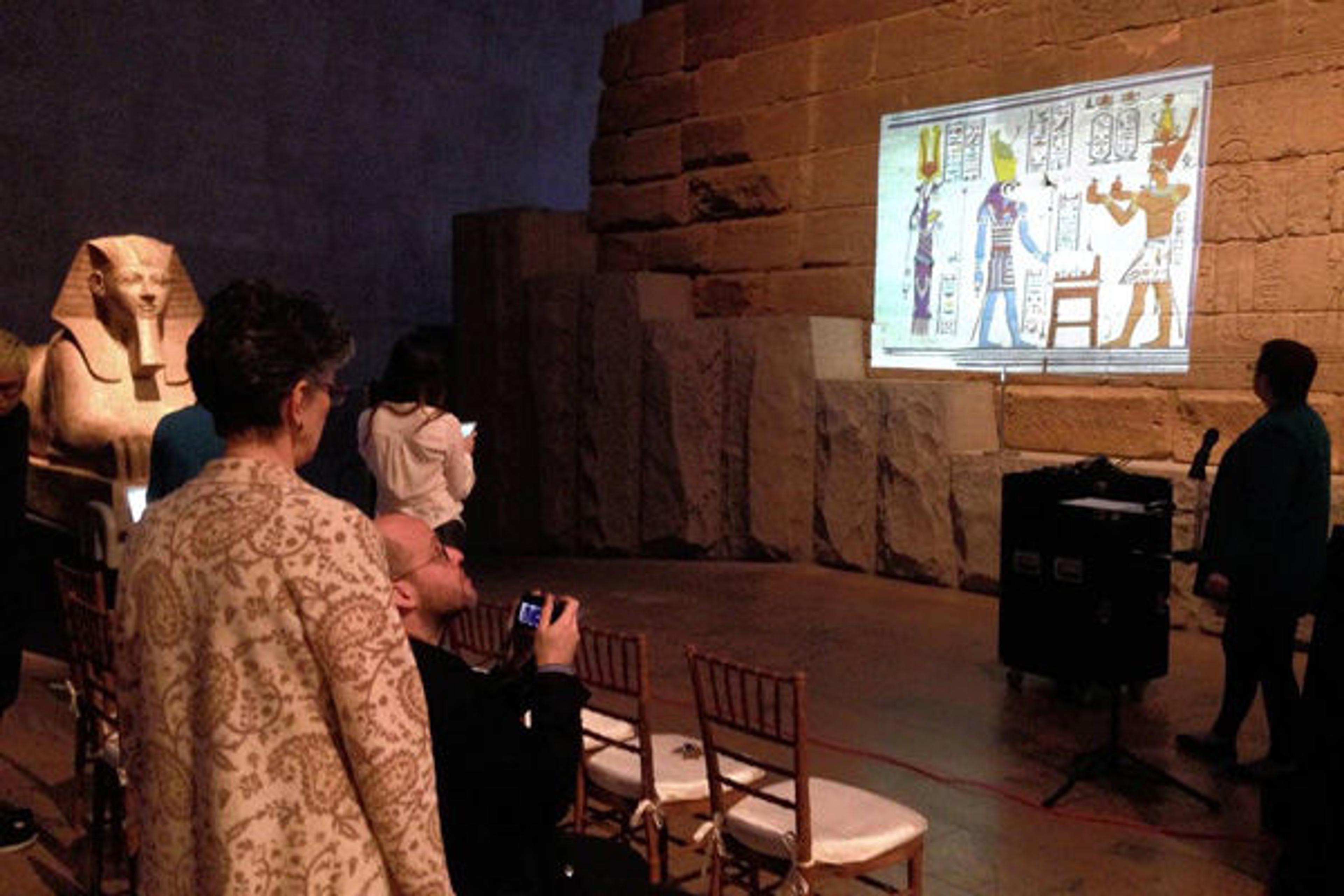
The Digital Department's MediaLab, working closely with Egyptian Art curators, using color projection to reimagine the original colors on the Temple of Dendur
«Last week, the Met's Twitter feed marked the twentieth anniversary of the launch of the Museum's website. A look back at the press release, "Metropolitan Museum to inaugurate Internet homepage on World Wide Web," shows how forward-thinking the Met was at the time (this is almost two years before google.com was registered as a domain and before some major U.S. universities had launched their sites). It also shows how far we and the world of technology have come since then. Along the way, the Met created a Digital Media Department, about six years ago.»
In the years since, the Met's digital work has proven to be one of the Museum's most effective tools for sharing our collection and scholarship with both new and existing audiences. The team has delivered on both big, buzzworthy projects and small, incremental improvements; it has been at the cutting edge of museum practice and has continued the unsung, day-to-day work that makes the digital Met possible.
Given all the changes affecting the digital world and workplace, the Met's digital department should reflect those changes where appropriate. And it should be helping to lead the cultural sector in the digital sphere, as it already does in the physical one.
Today, we formally announced a package of changes to the practices and structure of the Digital Media Department. None of the changes we are putting in place is revolutionary, but the changes respond to the changing expectations and habits of our audiences, new practices within the digital sector, and the strategic priorities of the Museum. Taken together, they will enable the team to better deliver its work at the Museum with clarity, coherence, efficiency, and ambition.
The changes are as follows:
- Redefine the department as the Digital Department: This title (more than "Digital Media Department") better reflects the department's core responsibility of growing the Museum's digital profile and public-facing digital products.
- Update the mission statement of the Digital Department: The new proposed definition encapsulates the functions the department is expected to lead within the Museum, and is required to develop world-class leadership: The Digital Department is responsible for the public-facing digital profile and products of the Museum.
- We provide leadership in the use of digital platforms and practices to fulfill the Museum's mission and strategic goals.
- We design, develop, manage, and continuously improve a portfolio of digital products.
- We produce and manage digital content for cross-platform publication, and we develop and manage editorial guidelines and standards relating to that content.
- We manage all digital collection-based content and information.
- We develop and maintain the data architecture for the delivery of the Museum's content across our products.
- Establish product ownership as a central role of the department: Product ownership and management will become key disciplines inside the department, to be prioritized above new product development. A product owner will be responsible for the ongoing management and improvement of his or her product to ensure it fulfills its business case with efficiency and ambition.
- Organize the department by functional teams: The organizational structure will be moved toward one that is defined around the functions of strategy, collections information, UX design, content development, media production, product ownership, and applications development.
- Establish common standards and guidelines for products and activities across the department: These will enable greater efficiency and consistency in the department's work and will include:
- Search engine optimization guidelines
- User analytics implementation guidelines
- User research and testing requirements
- Accessibility guidelines
- Data management standards
- Prioritize future recruitment in under-resourced areas: Whenever we have openings because of staff departures, we will look at the needs of the department as a whole before recruiting a direct replacement. In many instances, it will make sense to replace someone who is leaving, but in others, it will make more sense to look at the big picture and consider where the staffing need is greatest.
- Start now in preparing the Met for a "post-digital" world: We need to take steps now that respond to the inevitable growth of digital-related roles and responsibilities in the organization to the point where digital is no longer something "special" but a mainstream business activity. Solutions will include:
- Developing digital skills and understanding across the organization
- Decentralizing certain digital tasks, including content development
These changes will be rolled out with our team over the coming months, and will include the recruitment of some exciting new roles, which we will create using other vacant positions:
- Head of UX design
- Head of digital content
- Product manager of the website
We are always interested in new talent joining the team for these and other opportunities. If you would like to learn more, please watch the Met's LinkedIn jobs page; connect with our recruiter, Lori Malberg; and, of course, follow @MetMuseum on Twitter, Facebook, Instagram, Pinterest, and Weibo.